#flue maintenance
Text
Guardians of the Hearth: The Art of Chimney Care
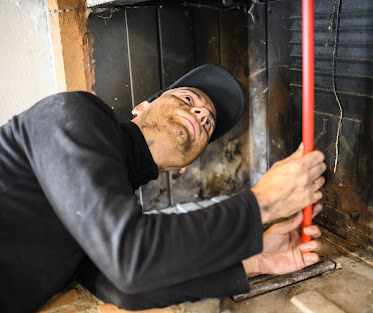
In the heart of many homes lies a source of warmth, comfort, and ambiance – the fireplace. Yet, behind the flickering flames and cozy gatherings, there's a silent guardian that requires attention and care: the chimney. Chimneys play a vital role in ensuring the safe operation of fireplaces and wood-burning stoves, but they often go unnoticed until problems arise. In this article, we'll explore the art of chimney care, highlighting its importance and providing essential tips for maintaining a safe and efficient chimney.
Understanding Chimney Functionality:
Before delving into chimney care, it's essential to understand how chimneys work. Chimneys serve as ventilation systems, allowing smoke, gases, and other byproducts of combustion to safely exit the home. They also create a draft, drawing fresh air into the fireplace or stove to support combustion. However, when chimneys are not properly maintained, they can become clogged with debris, leading to poor ventilation and increased fire risk.
The Importance of Chimney Inspections:
Regular chimney inspections are the cornerstone of chimney care. A professional chimney sweep should inspect your chimney at least once a year to check for creosote buildup, blockages, and structural damage. Creosote, a highly flammable substance produced during combustion, can accumulate inside the chimney and ignite, leading to chimney fires. Additionally, blockages caused by debris or animal nests can hinder proper airflow, increasing the risk of smoke backdrafts and carbon monoxide exposure.
Creosote Removal and Cleaning:
Creosote buildup is a common issue in chimneys and must be addressed promptly to prevent chimney fires. A professional chimney sweep can remove creosote using specialized brushes and tools, ensuring that your chimney remains clean and safe. In addition to creosote removal, chimney cleaning involves removing any debris or obstructions that may be blocking the flue. Regular cleaning not only reduces the risk of chimney fires but also helps to maintain optimal airflow and heating efficiency.
Chimney Cap Installation:
Installing a chimney cap is another essential aspect of chimney care. Chimney caps serve as protective covers that sit atop the chimney, preventing rain, debris, and animals from entering the flue. They also help to prevent downdrafts and improve overall chimney performance. A professional chimney technician can recommend the appropriate chimney cap for your chimney and ensure proper installation.
Maintaining Chimney Structural Integrity:
In addition to addressing internal issues, chimney care also involves maintaining the structural integrity of the chimney. Over time, exposure to the elements can cause chimney masonry to deteriorate, leading to cracks, gaps, and water leaks. Regular chimney inspections can help identify these issues early on, allowing for timely repairs that prevent further damage and prolong the lifespan of the chimney.
Conclusion:
In conclusion, chimney care is an essential aspect of home maintenance that should not be overlooked. By prioritizing chimney inspections, creosote removal, chimney cap installation, and structural maintenance, homeowners can ensure the safety and efficiency of their chimneys for years to come. Whether you enjoy cozy fireside evenings or rely on your fireplace for heating, investing in chimney care is key to protecting your home and family from potential hazards. So, remember to give your chimney the attention it deserves – after all, it's the silent guardian of your hearth.
#Chimney care#maintenance#inspection#creosote removal#cleaning#chimney sweep#safety#flue maintenance#chimney cap installation#hearth upkeep#fireplace maintenance#chimney structural integrity#repairs#draft management#waterproofing#animal nest removal.
0 notes
Text

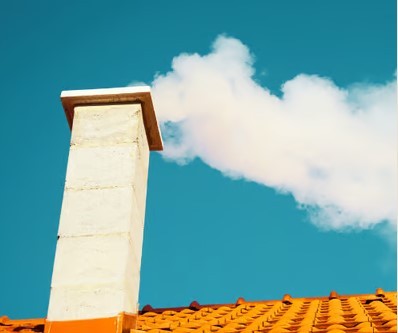
Website : https://brusherschimneyscleaning.com/
Address : 2100 Wellspring Dr, Beaumont, TX 77705
Phone : +1 936-504-3833
Brushers Chimney Cleaning of Beaumont is a trusted and reliable company based in Beaumont, Texas, dedicated to ensuring the safety and efficiency of your home's chimney system. With a team of skilled professionals, Brushers Chimney Cleaning offers comprehensive chimney cleaning services that go beyond the surface, addressing potential hazards and ensuring your fireplace or heating system operates at its best.
Business mail : [email protected]
#CHIMNEY SWEEPING & CLEANING#CHIMNEY REPAIR SERVICE#CHIMNEY INSPECTION SERVICE#Chimney Cap Repair#Chimney Crown Repair#Chimney Inspection#Chimney Liner Repair#Chimney Rain Cap Installation#Chimney Vent Installation#Chimney Damper Repair#Chimney Cleaning#Chimney Flue Installation#Chimney Installation#Chimney Repair#Chimney Maintenance#Chimney Flashing#Chimney Construction#Chimney Flue Repair#Chimney Insulation#Chimney Pointing#Chimney Restoration#Flexible Chimney Liner Installation
1 note
·
View note
Text
Why You Shouldn't Ignore the Vent Outside Your Fireplace
Do you have a fireplace in your home? If so, you may have noticed a vent on the outside of it. This vent is an essential part of your fireplace and plays a crucial role in keeping your family safe and preventing damage to your home. In this blog post, we will explore why ignoring the vent outside your fireplace can be dangerous and what you need to do to ensure that it remains in good…

View On WordPress
#Chimney and flue care#Fireplace venting#Gas fireplace safety#Outdoor Fireplace Maintenance#Wood burning fireplace tips
0 notes
Text
i’ve had a couple of instances lately where i’ve woken up to a dead wasp on my living room floor with no idea how it got in. i have a fireplace but the flue is closed, no obvious holes or gaps in my sliding glass back door (even just had the screen door repaired and wasp trap hung outside). i also don’t have central heat or a/c (just one box unit in the living room) so no vents. i’ve contacted maintenance but i’m scared and having trouble sleeping. does anyone have any idea how this keeps happening? i’m deathly afraid of wasps (like cold panic the second i see one afraid and need this to stop 😭)
7 notes
·
View notes
Text
youtube
Business Name:
All Valley Fireplace Repair
Street Address:
29555 N 68th Dr
City:
Peoria
State:
Arizona (AZ)
Zip Code:
85383
Country:
United States
Business Phone:
(602) 755-8767
Business Email:
[email protected]
Website:
https://allvalleyfireplacerepair.com/
Business Description:
Your Phoenix fireplace repair and maintenance service. Indoor and outdoor professional gas fireplace service. Call us today!
Google My Business CID URL:
https://www.google.com/maps?cid=8348037949827175701
Business Hours:
Sunday Closed
Monday 9AM–5PM
Tuesday 9AM–5PM
Wednesday 9AM–5PM
Thursday 9AM–5PM
Friday 9AM–5PM
Saturday Closed
Services:
fireplace repair, fireplace service, fireplace maintenance, gas fireplace repair, gas fireplace maintenance, fireplace screen replacement, fireplace inspection, fireplace specialist, gas fireplace service phoenix, gas fireplace repair phoenix, gas fireplace maintenance phoenix, fireplace repair phoenix, gas fireplace repairman, Chimney sweep, Additional category, Chimney cleaning, Chimney fan installation, Chimney flue cleaning, Chimney inspections, Chimney repair & restoration, Smoke chamber cleaning, chimney flashing repair, chimney repair
Keywords:
fireplace repair, fireplace service, fireplace maintenance, chimney repair, gas fireplace repair, pellet stove repair, gas fireplace maintenance, chimney flashing repair, fireplace screen replacement, fireplace inspection, wood stove repair, fireplace specialist
Location:
Service Areas:
2 notes
·
View notes
Text
Why Knowing Different Gas Log Fireplace Types Matter

In Australia, the charm and practicality of gas log fireplaces have made them a popular choice for many homes. These fireplaces offer the aesthetic appeal of a traditional wood-burning fire with the convenience and efficiency of gas. However, not all gas log fireplaces are created equal. Understanding the different types and their specific features can significantly influence your choice, ensuring you select the best option for your needs and preferences.
Types of Gas Log Fireplaces

Gas log fireplaces can be broadly categorised into three main types: vented, ventless, and direct vent. Each type has its unique characteristics, advantages, and potential drawbacks.
Vented Gas Log Fireplaces
Vented gas log fireplaces are designed to mimic the look and feel of a traditional wood-burning fireplace. They require a flue or chimney to vent the exhaust gases outside, similar to a conventional fireplace.
Ventless Gas Log Fireplaces
Ventless or vent-free gas log fireplaces do not require a chimney or flue, making them easier and cheaper to install. They are designed to burn gas more completely, producing minimal exhaust.
Direct Vent Gas Log Fireplaces
Direct vent gas log fireplaces offer a middle ground between vented and ventless systems. They use a sealed combustion system, drawing air from outside and venting exhaust gases back outside through a dual vent system.
Factors to Consider When Choosing a Gas Log Fireplace
When selecting a gas log fireplace, several factors should guide your decision beyond just the type of unit. Understanding your specific needs and the features available can help you make an informed choice.
Heat Output
The primary function of any fireplace is to provide warmth. Consider the size of the area you wish to heat and choose a fireplace with an appropriate heat output, measured in British Thermal Units (BTUs). Larger rooms or open-plan living spaces will require a unit with higher BTU ratings to effectively warm the space.
Fuel Type
Gas log fireplaces can be powered by either natural gas or liquid propane. Natural gas is often more convenient and cost-effective if you already have a gas line in your home. Liquid propane, on the other hand, is a good alternative for homes without a natural gas connection, although it can be more expensive.
Aesthetic Appeal
One of the significant benefits of gas log fireplaces is their visual appeal. Look for units with realistic log designs and flame patterns that enhance the ambience of your space. The choice of materials, such as ceramic or refractory logs, can also affect the realism and durability of the fireplace.
Installation and Maintenance
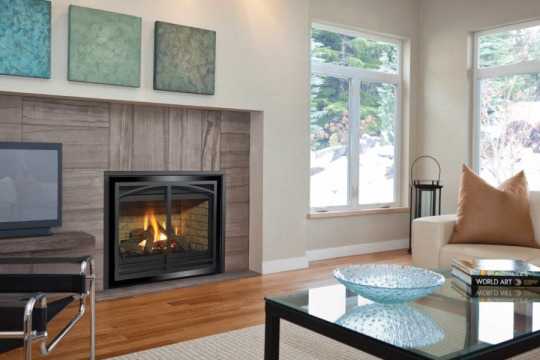
Consider the installation requirements and ongoing maintenance for each type of fireplace. Vented systems might require a professional to install a flue or chimney, while ventless systems are easier to install but require regular maintenance to ensure safe operation. Direct vent systems offer a balanced option but still need proper installation to ensure efficiency and safety.
Safety Features
Modern gas log fireplaces come with various safety features such as oxygen depletion sensors (ODS), automatic shut-off valves, and glass barriers to prevent accidental burns. These features are particularly important in homes with children or pets.
Benefits of Gas Log Fireplaces
Gas log fireplaces offer several advantages over traditional wood-burning fireplaces and other heating options. Understanding these benefits can help you appreciate why they might be the right choice for your home.
Convenience
One of the main draws of gas log fireplaces is their convenience. With just the flip of a switch or the push of a button, you can have a roaring fire without the need for kindling, wood, or cleaning up ashes. Many units also come with remote controls and programmable thermostats for added convenience.
Efficiency
Gas log fireplaces are typically more efficient than traditional wood-burning fireplaces. They convert a higher percentage of their fuel into usable heat, reducing waste and lowering heating costs. Ventless and direct vent systems are especially efficient, ensuring that most of the generated heat stays within the room.
Environmental Impact
Burning natural gas or propane produces fewer pollutants than burning wood. Gas log fireplaces emit lower levels of particulates, carbon monoxide, and other harmful substances, making them a more environmentally friendly option. They also eliminate the need for wood, which helps conserve forest resources.
Safety
Gas log fireplaces eliminate many of the hazards associated with wood-burning fireplaces, such as sparks, flying embers, and chimney fires. The controlled combustion process in gas fireplaces reduces the risk of accidental fires and makes them a safer option for many households.
Conclusion
Choosing the right gas log fireplace involves understanding the different types available and considering factors like heat output, fuel type, aesthetics, installation, maintenance, and safety features. Each type—vented, ventless, and direct vent—offers distinct advantages and potential drawbacks, making it essential to match the fireplace to your specific needs and circumstances.
#gas log fires melbourne#gas log fires#the gas log fire company#gas log fireplace#gas fireplace#gas heaters
0 notes
Text
Clearing the Air: The Importance of Chimney Cleaning

Chimneys are often overlooked when it comes to home maintenance, yet they play a crucial role in maintaining indoor air quality and ensuring the safe operation of fireplaces and heating systems. Neglecting chimney cleaning can lead to various problems, including reduced heating efficiency, poor indoor air quality, and even chimney fires.
Creosote, a highly flammable substance produced during the combustion of wood, can accumulate inside chimneys over time. Without regular cleaning, this buildup poses a significant fire hazard. Chimney fires can not only cause extensive damage to the chimney itself but also pose a threat to the entire home.
In addition to fire risk, a dirty chimney can also hinder proper ventilation, leading to poor indoor air quality. Smoke, gases, and other combustion byproducts may not be able to escape efficiently, resulting in respiratory issues and unpleasant odors inside the home. Furthermore, a blocked chimney can impede the flow of air, reducing the efficiency of heating systems and potentially increasing energy costs.
Regular chimney cleaning is essential for removing creosote buildup, ensuring proper ventilation, and maximizing heating efficiency. It also helps to prolong the lifespan of the chimney by preventing corrosion and deterioration. By staying proactive about chimney maintenance, homeowners can avoid costly repairs and ensure compliance with safety regulations.
In conclusion, chimney cleaning is a critical aspect of home maintenance that should not be overlooked. It not only prevents chimney fires and maintains indoor air quality but also maximizes heating efficiency and extends the lifespan of the chimney. Whether you use your fireplace regularly or only occasionally, scheduling routine chimney inspections and cleanings is essential for the safety and well-being of your home and family.
#Chimney cleaning#chimney sweep#creosote buildup#fireplace maintenance#chimney inspection#soot removal#flue cleaning#hearth care#fire safety#smokestack maintenance#chimney brush#chimney cap#chimney repair#carbon monoxide prevention#home ventilation#hearth cleaning service.
0 notes
Text
Understanding The Differences Between Condensing And Non-Condensing Boilers
With only so much heating options in the market, it is really crucial to understand the difference that condensing and non-condensing boilers have in order to make an intelligent decision about your house. Although performing one and the same function, both with differing efficiencies of operation, energy savings, and environmental footprints, these two types of boilers widely vary from each other. Only after having unraveled the differences between them can you basically explore the world of heating systems with clarity and understanding.
Key Takeaways:
Efficiency: Condensing boilers are more efficient than non-condensing boilers because they capture and reuse heat that would otherwise be wasted.
Installation: Condensing boilers are more complex and usually require a drain for the condensate produced in the heating process, while non-condensing boilers are simpler and easier to install.
Cost: While condensing boilers are more efficient in the long run, they are initially more expensive than non-condensing boilers. However, the energy savings over time can make up for the higher initial cost.
Boiler Basics
What are Boilers?
Generally, it is quite important for one to understand what boilers involve before one considers looking at the comparative differences between a condensing and non-condensing boiler. Boilers are commonly heating devices that provide heated water or steam for heating buildings as well as other functions in multiple domestic, commercial, and industrial applications.
How Do Boilers Work?
In a boiler, water is heated to make steam or hot water, which is then distributed through a piping system to provide space heating in the form of either radiant or convection energy. This is later controlled with the use of a thermostat for the maintenance of either the water or steam.
For example, in a steam boiler system, the steam moves along and gives off its heat, condensing back into water through pipes. In this case, a hot-water boiler system circulates hot water, carrying heat to the radiators or under-floor heating systems.
Condensing Boilers
What is a Condensing Boiler?
With a condensing boiler, efficiency is the name of the game. These boilers are designed to capture and reuse heat that would normally be lost in non-condensing models, making them more energy-efficient and environmentally friendly.
How Do Condensing Boilers Work?
Boilers work by recovering heat from exhaust gases that would otherwise be expelled through the flue. This recovered heat is used to preheat cold water coming into the boiler, reducing the work the boiler needs to do to raise the temperature to the required level. This process ultimately results in lower energy consumption and reduced heating costs.
Non-Condensing Boilers
What is a Non-Condensing Boiler?
Now, let's probe into the world of non-condensing boilers. These boilers are the traditional type of boiler that has been used for decades to provide heating and hot water in homes and buildings. Unlike condensing boilers, non-condensing boilers do not have a secondary heat exchanger to recover and recycle heat from the flue gases.
How Do Non-Condensing Boilers Work?
What makes non-condensing boilers different is their method of operation. These boilers work by burning fuel in a combustion chamber to generate heat, which is then transferred to the water circulating through the central heating system. The hot gases produced during this process are vented out of the flue, rather than being recycled back into the system.
Boilers function by heating water to generate steam or hot water. In the case of non-condensing boilers, the hot gases produced during the combustion process are released through the flue, without extracting the heat contained in the water vapor in the exhaust gases, unlike condensing boilers which utilize this heat to increase efficiency.
Key Differences
Energy Efficiency
The key difference between condensing and non-condensing boilers lies in their energy efficiency. Non-condensing boilers lose heat through the combustion process, while condensing boilers are designed to capture and reuse that lost heat, making them more energy efficient overall.
Environmental Impact
With a higher efficiency rate, condensing boilers not only save energy but also reduce greenhouse gas emissions. This means that condensing boilers have a lower environmental impact compared to non-condensing boilers, making them a more sustainable choice for heating your home.
Another important aspect to consider is that condensing boilers often require a different installation process than non-condensing boilers, due to the need for a drain line to remove the condensed water. This additional step may factor into your decision-making process when choosing between the two types of boilers.
FAQ
Q: What is a condensing boiler?
A: A condensing boiler is a high-efficiency heating unit that is designed to capture and reuse heat that would otherwise be lost in traditional non-condensing boilers.
Q: How does a condensing boiler work?
A: Condensing boilers utilize a secondary heat exchanger to extract heat from the hot exhaust gases, allowing the boiler to operate at maximum efficiency by recycling heat that would otherwise be wasted.
Q: What are the benefits of using a condensing boiler?
A: Condensing boilers offer increased energy efficiency, lower fuel consumption, and reduced carbon emissions compared to non-condensing boilers, resulting in cost savings and environmental benefits.
Q: What is a non-condensing boiler?
A: A non-condensing boiler is a traditional heating unit that releases exhaust gases directly into the atmosphere without capturing or reusing any heat, leading to lower efficiency compared to condensing boilers.
Q: What are the main differences between condensing and non-condensing boilers?
A: The key difference lies in how they handle heat: condensing boilers recycle heat from exhaust gases, while non-condensing boilers release heat into the environment. This results in higher efficiency and lower operating costs for condensing boilers.
Conclusion
In conclusion, the differences between the two types of boilers make one be said to be making well-informed choices when it comes to heating their home space. Condensing boilers are far more efficient and friendly toward energy bills but can be much more expensive to buy, whereas non-condensing ones are cheaper on upfront expenses. Making a comparison, homeowners can make informed choices on the best option that matches the need with the pocket.
0 notes
Text
Electric Drying Oven, Electric Drying Ovens, Manufacturer, Mumbai, India
Manufacturer and Supplier of Electric Drying Oven, Electric Drying Ovens, Heating Unit, Pumping Unit, Pumping Oil In Reheating Furnaces, Heating / Pumping Unit, Mumbai, India.
Industrial Furnaces, Industrial Burners, Industrial Furnace, Industrial Burner, Walking Beam Type Re-Heat Furnaces, Bright Annealing Furnaces, Blue Flame Gas Burners Series 44, Pusher Type Re-Heat Furnaces, Continuous Wire Annealing Furnaces, Reheating Furnace, Pusher Furnace, Pusher Furnace, Walking Hearth Furnace, Chamber Furnace, Forging Furnace, Chamber Furnaces, Box Furnace For Forging, Chamber Furnace, Twin Chamber Furnace, Ss Wire Furnace, Strand Annealer, Solution Annealing Furnace, Fine Wire Furnace, Aluminium Melting Furnace, Stationary Type, Tilting Type, Tilting Type Mechanical, Roller Hearth Annealing Furnace, Industrial Roller Hearth Annealing Furnace, Bright Annealing Furnace, Pit Furnace, Bogie Hearth Furnace, Recuperator, Hair Pin Type Recuperator, Over Head Recuperator, Under Ground Recuperator, Radiation Type Recuperator, Industrial Burner, Coal Gas Burner, Oil Burner, Dual Fuel Burner, Gas Burner, Heating Pumping Unit, Combustion Blower, Charging Pusher, Discharge Ejector, Flue Damper, Gas Train, Rolling Mill Furnace, Oil Burner, Annealing Furnace, Gas Burner, Coal Gas Burner, Air Blower, Air Butterfly Valve, Alkaline Tank, Aluminium Melting Furnace, Aluminium Melting Furnace, Aluminium Melting, Annealing, Baking Oven, Blower, Blu-Flam Burners, Box Furnace For Forging, Burners, Butterfly Valve, Centrifugal Blower, Chamber Furnace, Charging Pusher, Coal Gas Burners, Combustion Blower, Combustion Equipments, Combustion Piping, Diesel Burners, Discharge Pusher, Dual Fuel Burners, Ejector, Electric Heat Furnace, Flowmeter, Forging Chamber Furnace, Forging Furnace, Forging Furnace, Furnace Maintenance, Furnace Manufactures, Furnace Oil Burner, Furnace Repair, Furnace Repair, Furnace Revamping, Furnace, Furnace, Gas Burners, Gas Burners, Gas Conversion, Gas Fired Furnace, Gas Piping, Hardening & Tempering Furnace, Heat Economizer, Heat Recovery System, Heat Treatment Furnace, Heat Treatment Furnace, Heat Treatment, Heating Pumping Unit, Hot Air Blower, Hot Air Lagging, Hot Air Recuperator, Industrial Burners, Industrial Melting Furnace, Ldo Burners, Lpg Burner, Melting Furnace, Monoblock Burners, Multiblock Burner, Natural Gas Burner, Oii Burners, Oil Burner, Oil Burners, Oil Fired Furnace, Oil Fired Salt Bath Furnace, Oil Flowmeter, Oil Micro Valve, Oil Piping, Oil Pumping Unit, Pipe Lagging, Pit Furnace, Pit Type Chamber Furnace, Producer Gas Burners, Pumping Unit, Pusher Furnace For Rolling Mill, Pusher Furnace, Pusher Re-Heat Furnace, Pusher, Re-Heating Furnace, Recuperator, Recuperator, Reheat Furnace For Rolling Mill, Reheat Furnace, Reheat Furnace, Reverberatory Furnace, Rod Mill Furnace, Roller Furnace, Roller Hearth Annealing Furnace, Rolling Mill Furnace, Screw Conveyor Furnace, Section Mill Furnace, Section Mill Pusher Furnace, Solenoid Valve, Tilting Furnace, Top & Bottom Fired Furnace, Walking Beam Furnace Walking Hearth Furnace, Walking Beam Furnace, Project Engineer Jobs, Design Engineer Jobs, Project Engineer For Furnace, Design Engineer For Furnace, Jobs In Mechanical, Inspection Engineer, Jobs In Project, Jobs In Design, Site Engineer, Jobs For Site Engineer, Mumbai, India
0 notes
Text
Comprehensive Guide to Heating and Cooling: Ensuring Year-Round Comfort in Your Home
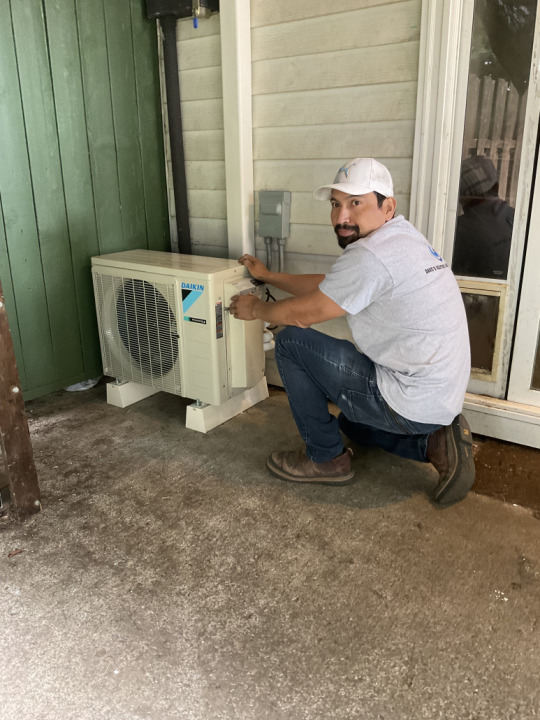
Maintaining a comfortable home environment throughout the year requires a deep understanding of your heating and cooling systems. Proper maintenance and choosing the right systems are crucial for efficiency and comfort. In this detailed guide, we will explore different types of heating and cooling systems, essential maintenance practices, energy efficiency tips, and how to choose the best HVAC service provider.
Understanding Heating Systems
Heating systems are vital for keeping your home warm during the cold months. Here’s a closer look at the most common types of heating systems:
1. Furnaces
Operation: Furnaces work by blowing heated air through ducts that deliver the warm air to rooms throughout the house via air registers or grills. They are powered by electricity, natural gas, or oil. Components:
Burner: Burns fuel to create heat.
Heat Exchanger: Transfers heat to the air without mixing combustion gases.
Blower: Circulates air over the heat exchanger and through the home.
Flue: Expels exhaust gases safely outside.
2. Heat Pumps
Operation: Heat pumps transfer heat from the outside air or ground into your home. They can also reverse the process to cool your home in the summer. Types:
Air-Source Heat Pumps: Extract heat from the air.
Ground-Source (Geothermal) Heat Pumps: Extract heat from the ground.
3. Boilers
Operation: Boilers heat water to provide either hot water or steam for heating. The steam or hot water is distributed via pipes to radiators or radiant floor systems. Components:
Burner: Heats the water.
Heat Exchanger: Transfers heat to the water.
Distribution System: Delivers hot water or steam to
0 notes
Text
EXPLORING THE BENEFITS AND APPLICATIONS OF HASTELLOY C276
Hastelloy C276 is a renowned nickel-based superalloy celebrated for its exceptional corrosion resistance and mechanical properties. Widely used across various industries, this alloy offers many benefits and finds extensive applications in challenging environments where conventional materials fail to perform adequately. In this blog, we delve into the advantages and diverse applications of Hastelloy C276.
THE BENEFITS OF HASTELLOY C276:
Outstanding Corrosion Resistance: Hastelloy C276 excels in resisting corrosion from various aggressive chemicals, including chlorides, sulfuric acid, hydrochloric acid, and phosphoric acid. Its superior corrosion resistance makes it suitable for environments prone to corrosion-induced damage.
High-Temperature Stability: Hastelloy C276 retains its mechanical properties withstanding elevated temperatures, ensuring structural integrity even in high-temperature applications. This stability makes it an ideal choice for equipment exposed to extreme heat.
Excellent Mechanical Strength: Hastelloy C276 exhibits impressive mechanical strength, providing robustness and reliability in demanding environments. Its strength allows it to withstand high-pressure conditions and mechanical stress.
Versatility in Applications: Due to its exceptional properties, Hastelloy C276 is indispensable across various sectors. Its versatility makes it indispensable in chemical processing, oil and gas, pharmaceuticals, pulp and paper, and waste treatment.
Resistance to Pitting and Crevice Corrosion: Beyond general corrosion resistance, Hastelloy C276 offers resistance to localized corrosion phenomena like pitting and crevice corrosion, ensuring protection even in areas prone to such damage.
Ease of Fabrication: Hastelloy C276 can be easily fabricated into different forms, including C276 sheets, C276 plates, C276 pipes, and fittings. Its machinability and weldability facilitate the fabrication of complex structures and components.
Longevity and Durability: Components made from Hastelloy C276 are known for their longevity and durability. They require minimal maintenance and offer prolonged service life, reducing downtime and replacement costs.
APPLICATIONS OF HASTELLOY C276:
Chemical Processing: Hastelloy C276 is widely used in chemical processing equipment, such as reactors, vessels, and piping systems, where resistance to corrosive chemicals is crucial.
Oil and Gas Industry: In oil and gas extraction and refining operations, Hastelloy C276 is employed in equipment exposed to corrosive fluids, high temperatures, and aggressive environments.
Pharmaceutical Manufacturing: Pharmaceutical companies utilize Hastelloy C276 for equipment to produce drugs and pharmaceutical products, ensuring product purity and integrity.
Pulp and Paper Production: Hastelloy C276 is used in pulp and paper mills to handle corrosive chemicals used in bleaching and pulping processes, extending equipment lifespan and improving efficiency.
Waste Treatment: Waste treatment facilities utilize Hastelloy C276 to handle corrosive fluids and gases involved in wastewater treatment processes, ensuring reliable performance and longevity of equipment.
Desalination Plants: Hastelloy C276 finds applications in desalination plants for components exposed to seawater and aggressive brines, providing corrosion resistance and longevity in challenging environments.
Power Generation: Hastelloy C276’s corrosion resistance and high-temperature stability benefit components in power generation facilities, such as boilers, heat exchangers, and flue gas desulfurization systems.
In conclusion, Hastelloy C276 is a highly versatile and reliable material offering exceptional corrosion resistance, mechanical strength, and longevity. Its broad range of applications across diverse industries underscores its significance in environments where corrosion and high temperatures pose significant challenges. By leveraging the benefits of Hastelloy C276, industries can ensure the durability, reliability, and efficiency of their equipment and processes, even in the most demanding conditions.
To Know More: https://www.smmindustriesllp.com/exploring-the-benefits-and-applications-of-hastelloy-c276/
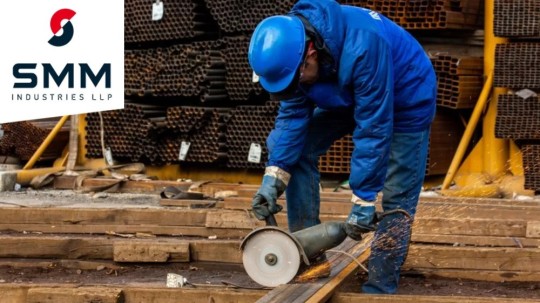
0 notes
Text
Optimizing HVAC Efficiency: Tips for Energy Savings in Kenner and New Orleans Homes
Introduction: Carbon monoxide (CO) is a colorless, odorless gas that is produced by the incomplete combustion of fuels such as gas, oil, and wood. It is often called the "silent killer" because it is virtually undetectable without specialized HVAC In Kenner equipment. In Kenner and New Orleans, where many homes rely on fuel-burning appliances for heating and cooking, carbon monoxide detection is essential for ensuring the safety and well-being of residents. In this article, we'll explore the importance of carbon monoxide detection and provide guidance on how homeowners can protect themselves and their families from this deadly gas.
Understanding the Dangers of Carbon Monoxide: Carbon monoxide is highly toxic and can be deadly if inhaled in high concentrations. It interferes with the body's ability to transport oxygen to vital organs, leading to symptoms such as headaches, dizziness, nausea, confusion, and eventually loss of consciousness and death. Because it is odorless and colorless, carbon monoxide can build up indoors without anyone noticing, making it particularly dangerous.
Sources of Carbon Monoxide in Homes: Carbon monoxide can be produced by a variety of household appliances and equipment, including furnaces, water heaters, stoves, fireplaces, and generators. Improperly installed, maintained, or ventilated appliances are more likely to produce high levels of carbon monoxide. Additionally, vehicles left running in enclosed spaces such as garages can also be a significant source of carbon monoxide poisoning.
The Importance of Carbon Monoxide Detectors: Carbon monoxide detectors are essential safety devices that can alert occupants to the presence of carbon monoxide in the home. These detectors monitor the air for the presence of CO and emit a loud alarm if dangerous levels are detected, allowing occupants to evacuate and seek fresh air before it's too late. It's recommended to install carbon monoxide detectors on every level of the home and near sleeping areas for maximum protection.
Proper Installation and Maintenance: When installing carbon monoxide detectors, it's essential to follow manufacturer instructions and place them in locations where they can effectively detect carbon monoxide but are not subject to false alarms from sources such as cooking fumes or humidity. Test detectors regularly and replace batteries as needed to ensure they are functioning correctly. Additionally, have fuel-burning appliances inspected and serviced annually by qualified professionals to ensure they are operating safely and efficiently.
Carbon Monoxide Safety Tips for Homeowners: In addition to installing carbon monoxide detectors, homeowners can take several steps to minimize the risk of carbon monoxide poisoning in their homes. Ensure that all fuel-burning appliances are properly installed, vented, and maintained according to manufacturer guidelines. Never use portable generators, grills, or other fuel-burning devices indoors or in enclosed spaces. Keep chimneys and flues clear of obstructions and have them inspected regularly for any signs of damage or blockages.
Conclusion: Carbon monoxide detection is a critical component of home safety, particularly in areas like Kenner and New Orleans where fuel-burning appliances are common. By installing carbon monoxide detectors, following proper installation and maintenance procedures, and taking proactive steps to minimize the risk of CO exposure, homeowners can protect themselves and their families from this silent but deadly threat. With vigilance and awareness, we can ensure that our homes remain safe and comfortable environments for all who inhabit them.
0 notes
Text
A Guide to Construction Inspection of Diesel Generator Sets
In today's world, diesel generators have become a popular solution for backup power supply. To ensure the normal working of diesel generator sets , reduce the unnecessary maintenance and increase the serviceability rate, it's necessary to conduct inspection on generator sets. Here are five inspection standards on construction sites:
We have to make sure the output voltage of diesel generators used on construction sites meets the voltage level requirements of the external power supply, under the condition that the whole thing works. This measure not only ensures the normal operation of equipment on construction sites, but also effectively reduces the risk of electrical equipment damage and improves the efficiency of construction on site. Meanwhile, reasonably adjusting the output voltage of the generator is also beneficial for saving energy resources, reducing its energy consumption, and meeting the requirements of sustainable development. Therefore, in construction sites, we should pay close attention to the regulation and management of the output voltage of diesel generator sets, so as to ensure the safety, stability, and reliability of the production environment.

When installing a fixed diesel generator set, it is necessary to choose a regular indoor foundation, ensuring that the ground is 0.25-0.30 meters above the indoor ground. This design aims to ensure the stable and reliable operation of the generator set, improve the work efficiency, and extend its service life. For portable diesel generator sets, they need to be placed horizontally and stably, and the trailer should be tightly grounded with the front and rear wheels reliably clamped, so as to ensure the safety and reliability of the generator set during movement. The outdoor diesel generator sets need to be equipped with protective sheds to protect the equipment from external environmental influences, extend its service life, and ensure the normal operation. Only by strictly following the prescribed operation and installation can the safe and efficient operation of the diesel generator set be ensured, providing stable and reliable power support for production and daily life.
In order to ensure electrical safety and comply with fire safety standards, it is necessary to maintain an appropriate safety distance when setting up diesel generator sets as well as the related control, power distribution, and equipment maintenance. This is to avoid dangerous situations such as fires and improve people's life and work safety. In addition, all flues must also extend to the outside, and it is not allowed to store oil drums indoors or around the flues to prevent oil drums from leaking or self ignition and other disasters. Only by implementing these safety measures can we ensure the normal operation of electrical equipment and protect people's lives and property. Therefore, we should always remember safety first, and take preventive measures, jointly creating a safe and warm living environment.
The selection of installation location for diesel generator sets is crucial, and many factors need to be considered to ensure their normal running and efficient utilization. Firstly, a location close to the load center should be selected to facilitate the connection and management of wiring and ensure the efficiency of power transmission. Secondly, clear surrounding roads are also an essential condition for emergency maintenance and transportation of equipment. At the same time, pollution sources and areas prone to water accumulation should be avoided to ensure the stability and service life of the diesel generator sets. Careful consideration of various factors during the installation on the construction sites not only reflects the professional level of the construction workers, but also shows a responsible attitude towards project quality and environmental protection. Therefore, it is necessary to comprehensively consider various conditions when selecting a suitable installation location so that the diesel generator sets can work safely and efficiently, providing reliable power support for engineering construction.
In modern industrial production, as an important power supply equipment, diesel generator sets should comply with strict safety regulations. The power supply of a generator set must be firmly connected to the external power circuit which it must not operate in parallel with to ensure stable and reliable power transmission. When two or more generator units are working in parallel, it is even more necessary to install a synchronizer to operate the units at the same frequency and phase through the process of synchronization for stable power output. Only after the unit is synchronized can power be delivered to the load, ensuring reliable power supply for equipment and facilities. These strict regulations and operating procedures aim to improve the operational efficiency and safety of the power system and ensure the normal operation of industrial production.
0 notes
Text
From Flue to Crown: Understanding the Anatomy of Your Chimney

The Significance of Chimney Maintenance
Nothing enhances the cozy atmosphere of a home quite like the warm glow of a fireplace. However, the safety and efficiency of this beloved feature depend on understanding and maintaining the complex structure of your chimney. Proper chimney maintenance is crucial for both functionality and safety, protecting your home from potential dangers.
Flue Liner: The Essential Element
At the heart of your chimney is the flue liner, a vital component that directs smoke and gases out of your home. This protective barrier prevents the corrosive byproducts of combustion from damaging the chimney’s structure. Maintaining the flue liner is a critical aspect of chimney care, as any damage can significantly impact safety and efficiency. Regular inspections and upkeep are necessary to ensure it remains intact.
The Chimney Stack: Pathway to the Sky
The chimney stack, rising from the roofline, channels smoke and gases out into the open air. Weather exposure can cause its masonry to crack and leak over time. Addressing these issues promptly through regular maintenance helps prevent further deterioration and maintains the structural integrity of your chimney.
Chimney Cap: Your Chimney's Protector
Sitting atop the chimney stack, the chimney cap guards against debris, animals, and rainwater. Neglecting its maintenance can lead to blockages and water damage, affecting both the safety and efficiency of your chimney. Regular inspections and cleaning are crucial to ensure the cap remains effective and intact.
Professional Chimney Services: Essential Expertise
While understanding your chimney's anatomy is important, professional maintenance and repairs are equally vital. Local chimney sweep and repair services provide the expertise needed to inspect, clean, and repair your chimney, ensuring it functions optimally and safely.
Ensuring a Safe and Cozy Home
Your chimney plays a crucial role in maintaining the comfort and safety of your home. By understanding its components—from the flue to the crown—you can prioritize its care effectively. Staying proactive with regular inspections and seeking professional help when necessary allows you to enjoy your fireplace with peace of mind, knowing your chimney is well-maintained.
To sum up, taking care of your chimney not only extends its lifespan but also safeguards your home. Regular inspections, timely repairs, and professional assistance are key to ensuring your family's well-being and comfort. Investing in chimney maintenance is an investment in the safety and coziness of your home.
#chimney care#first aid chimney care#chimney inspection and repair near me#chimney service and repair near me#chimney sweep and repair near me
0 notes
Text
Why is an electric hot water system better than a gas hot water system?
In the realm of household utilities, the choice between electric and gas hot water systems is a critical decision. While both serve the fundamental purpose of providing hot water, electric systems stand out as a superior option for several reasons, especially in terms of sustainability and efficiency. Let's delve into why electric hot water systems are a better choice for your home compared to their gas counterparts.

Environmental Impact:
One of the most significant advantages of electric hot water systems is their lower environmental impact. Unlike gas systems, which emit carbon dioxide and other greenhouse gases during operation, electric systems produce zero emissions on-site. With an increasing global focus on combating climate change and transitioning to cleaner energy sources, opting for an electric hot water system aligns with sustainability goals and reduces your household's carbon footprint.
Energy Efficiency:
Electric hot water systems have made significant strides in energy efficiency over the years. Modern electric heaters often incorporate advanced technologies such as heat pump technology, which can extract heat from the surrounding air to heat water more efficiently than traditional resistance heating. In contrast, gas systems can suffer from energy losses through heat dissipation and combustion inefficiencies, making electric systems the more energy-efficient choice in many cases.
Cost-effectiveness:
While the upfront cost of installing an electric hot water system may be slightly higher than that of a gas system, the long-term operational costs tend to be lower. Electric systems typically have lower maintenance requirements and longer lifespans, reducing the need for frequent repairs or replacements. Additionally, with the rising cost of natural gas in some regions, electric hot water systems can offer greater stability in utility expenses over time.
Versatility and Space Efficiency:
Electric hot water systems offer greater flexibility in installation locations compared to gas systems. Without the need for venting or flues, electric heaters can be installed in a wider range of indoor and outdoor spaces, making them suitable for homes with limited square footage or unconventional layouts. This versatility can be particularly advantageous for renovations or new construction projects where space optimization is a priority.
Safety and Convenience:
Electric hot water systems are generally considered safer than gas systems due to the absence of combustion processes and potential gas leaks. With no open flames or combustion byproducts, electric heaters pose fewer risks of fire or carbon monoxide poisoning, providing peace of mind for homeowners and their families. Additionally, electric systems often feature built-in safety mechanisms such as automatic shutoff valves and temperature controls for added protection.
0 notes
Text
The Value of Chimney Repair Service to Ensure a Safe Home

Chimneys are not simply decorative functions of homes; they play a crucial duty in keeping your home safe. In time, smokeshafts can wear away due to weather conditions, age, or absence of maintenance. Neglecting smokeshaft repair service and upkeep can result in different safety threats, consisting of fire dangers and dangerous carbon monoxide exposure. For more insights about this topic, click here now!
One typical issue that demands smokeshaft fixing is brick and mortar deterioration. This deterioration can jeopardize the structural stability of the chimney, leading to possible collapses. Furthermore, harmed physicals can enable water to seep right into the chimney, triggering additional degeneration and possibly damaging various other components of your home.
One more essential factor to focus on chimney fixing is to prevent chimney fires. Creosote, a byproduct of melting wood, can accumulate inside the chimney flue gradually. If this extremely combustible material stirs up, it can result in a chimney fire that can rapidly spread to the remainder of the house. Regular chimney inspections and repairs can help remove creosote buildup and reduce the risk of smokeshaft fires.
Additionally, making sure that your smokeshaft is in good problem is crucial for preventing carbon monoxide leaks. Splits or gaps in the smokeshaft structure can enable this deadly gas to leak right into your home instead of being securely vented outside. Carbon monoxide exposure can have major health and wellness effects, making smokeshaft repair service a vital facet of home safety and security.
In conclusion, smokeshaft repair is not nearly preserving the visual appeals of your home; it is a crucial element of home safety. By attending to issues such as brick degeneration, creosote buildup, and structural damages immediately, you can guarantee that your smokeshaft remains to function effectively and safely. Regular smokeshaft examinations by qualified chimney repair specialists can help determine any kind of problems early and stop potential threats, giving you with assurance recognizing that your home is shielded. Check out this post for more detailed info: https://www.encyclopedia.com/places/britain-ireland-france-and-low-countries/british-and-irish-political-geography/chimney.
0 notes